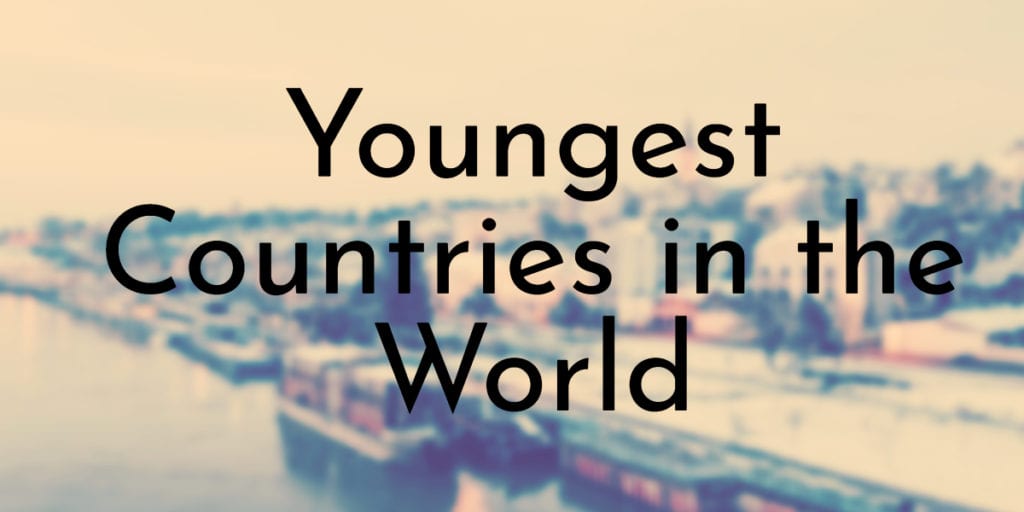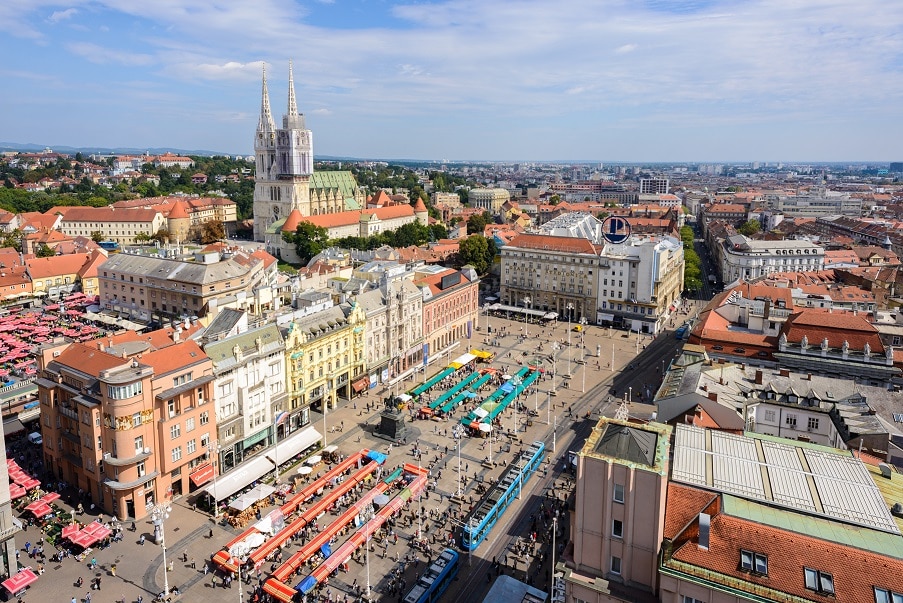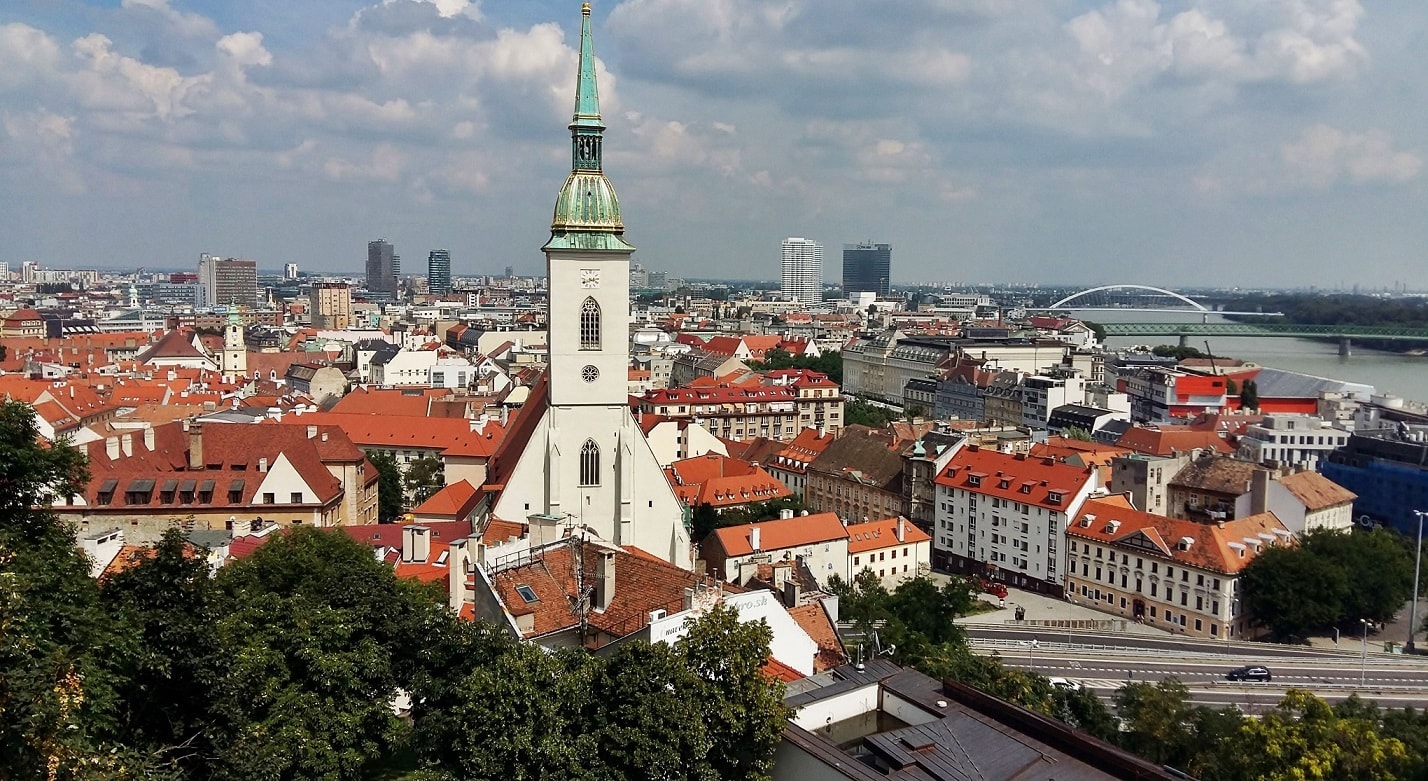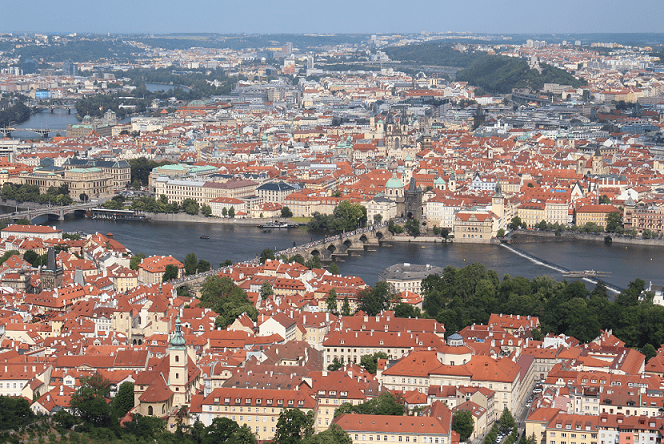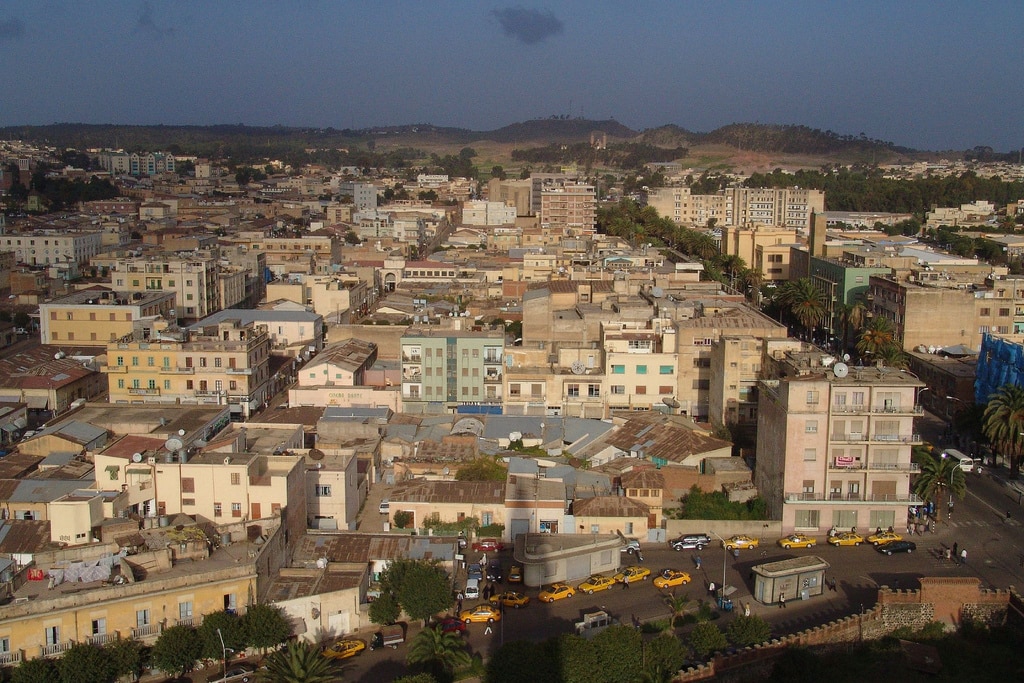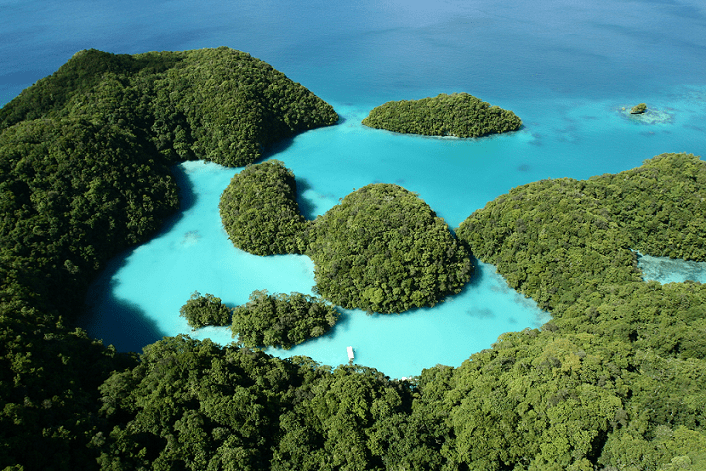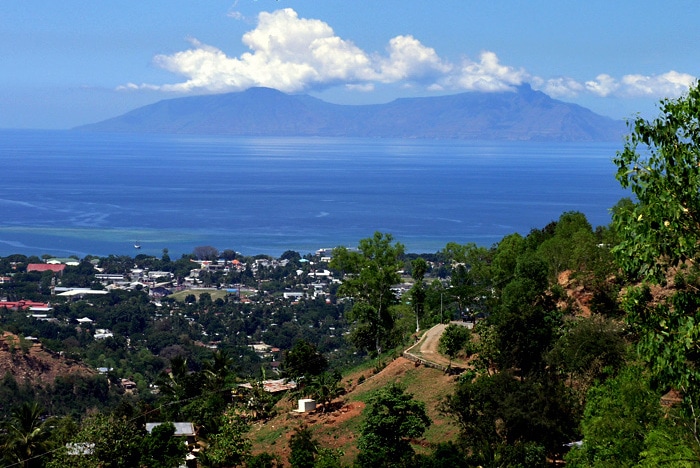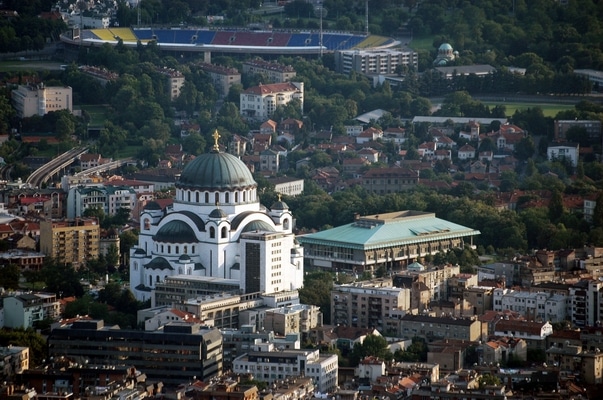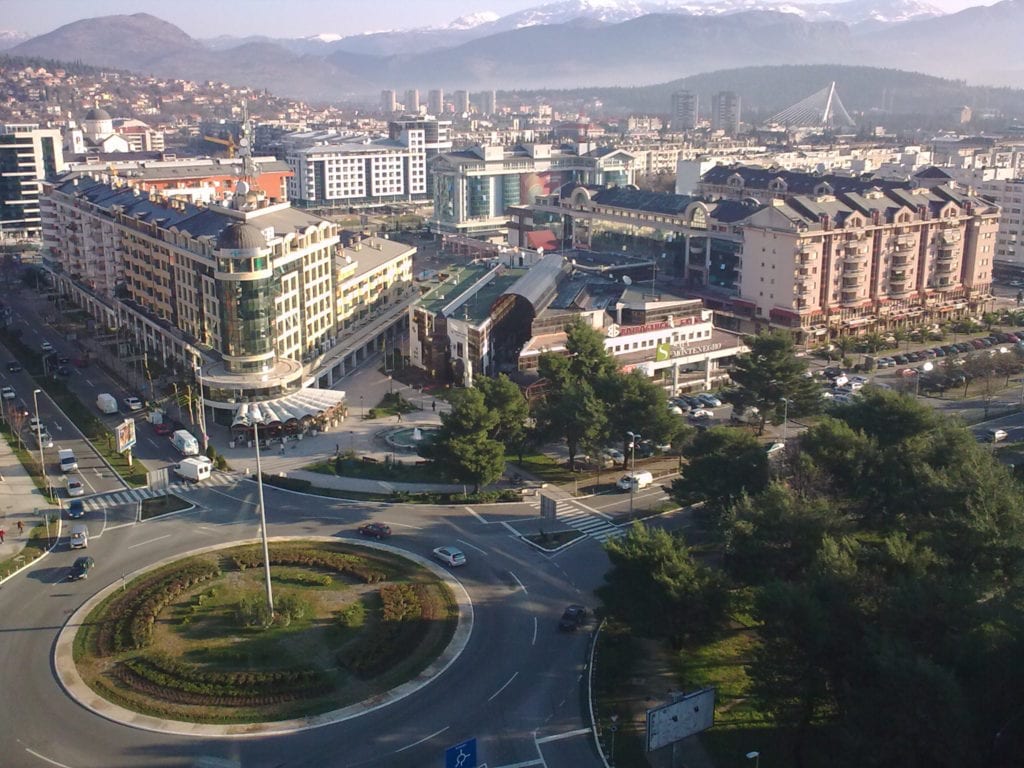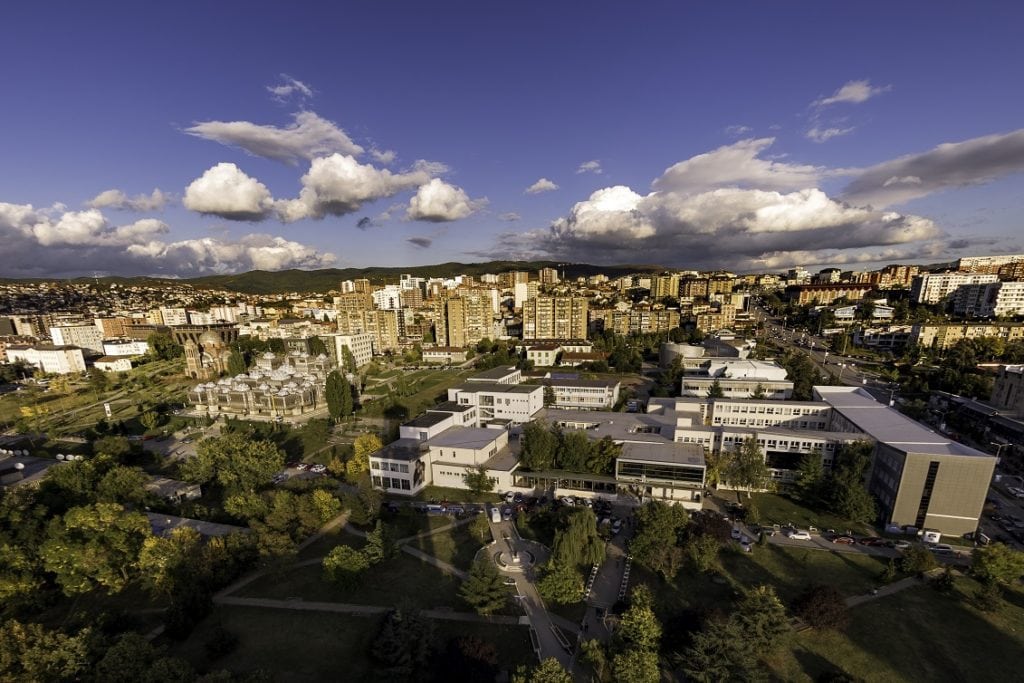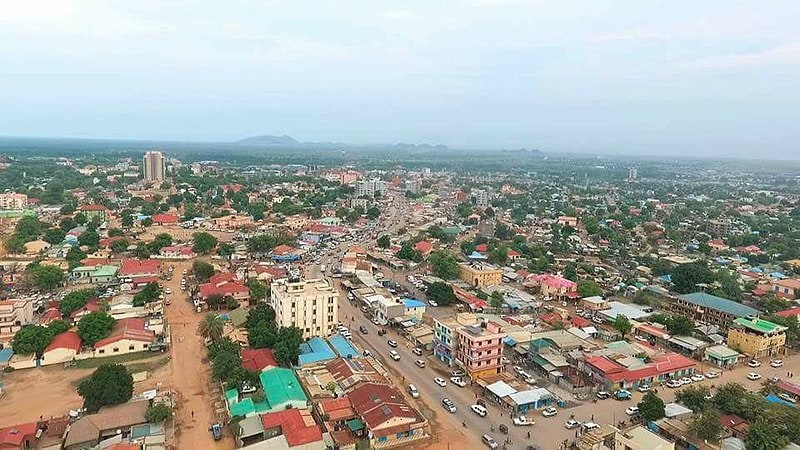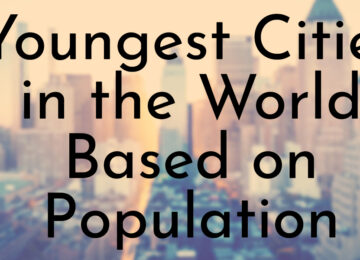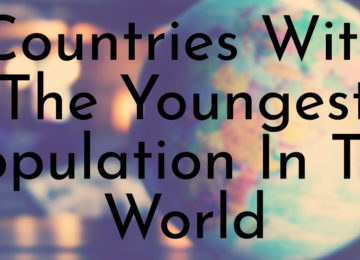Today, there are 195 recognized countries in the world. While many of these countries have been around for centuries, new countries are still being formed in the modern era. In fact, all of the world’s youngest countries on this list are just a few decades old. The youngest country at the top of this list, just celebrated its 10th anniversary in 2021.
Almost all of the country’s on this list were formed when they declared their independence from a nearby ruling nation. Some have thrived since gaining their sovereignty, while others are still struggling to find their footing.
10. Croatia
Year Established: June 25, 1991
Capital: Zagreb
Government Type: Unitary Parliamentary Constitutional Republic
Current Population: 3,901,165 (2021 Estimate)
photo source: Wikimedia Commons
Croatia, officially the Republic of Croatia is a country at the crossroads of Central and Southeast Europe. On June 25, 1991, Croatia declared independence after the dissolution of its association with Yugoslavia. However, Croatia continued to fight for its independence for four years in the War of Independence.
The war finally ended in 1995 when Croatia launched two major offensives known as Operation Flash and Operation Storm. Since then, the Serb and Croatian governments have mostly peacefully cooperated, although some tensions do remain.
Although, Croatia faced the challenges of post-war reconstruction, the country has come a long way.
Today, Croatia is classified by the World Bank as a high-income economy and ranks very high on the Human Development Index. Additionally, Croatia is a popular tourist destination.
Did You Know?
Over one million tourists per year, are involved with naturism or nudism, for which Croatia is famous. Croatia was the first European country to develop commercial naturist resorts.
9. Slovakia
Year Established: January 1, 1993
Capital: Bratislava
Government Type: Unitary Parliamentary Constitutional Republic
Current Population: 5,464,060 (2020 Estimate)
photo source: Wikimedia Commons
Slovakia is the other half of the former Czechoslovakia, which gained its sovereignty along with the Czech Republic in 1993. Czechoslovakia was first formed after World War I and the dissolution of Austria-Hungary.
It was the only country in central and eastern Europe to remain a democracy during the interwar period. Unfortunately, Czechoslovakia was gradually taken over by fascist regimes. After a coup in 1948, Czechoslovakia came under communist administration, and became a part of the Soviet-led Eastern Bloc.
Since becoming its own country, Slovakia has become a developed country with an advanced high-income economy, ranking very high in the Human Development Index. Slovakia also performs favorably in measurements of civil liberties, press freedom, internet freedom, democratic governance, and peacefulness.
Did You Know?
Slovakia is the world’s largest per-capita car producer; it manufactured a total of 1.1 million cars in 2019, representing 43% of its total industrial output.
8. Czech Republic
Year Established: January 1, 1993
Capital: Prague
Government Type: Unitary Parliamentary Constitutional Republic
Current Population: 10,701,777 (2021 Estimate)
photo source: Wikimedia Commons
The Czech Republic, also known as Czechia, was formed in 1993 following the dissolution of Czechoslovakia. Like many of the countries in this part of Europe, the Czech Republic has been ruled by various empires.
In the 11th century, when it was the Duchy of Bohemia, the Czech Republic was recognized as an Imperial State of the Holy Roman Empire. After the dissolution of the Holy Empire in 1806, the Czech Republic became a part of the Austrian Empire.
After the Munich Agreement in 1938, Nazi Germany took control over the Czech lands. Czechoslovakia was restored in 1945 and became an Eastern Bloc communist state following a coup d’état in 1948.
The Czechs attempted to overthrow communist rule, but were squashed during the Prague Spring in 1968. Communist rule did not end until the Velvet Revolution in 1989.
Did You Know?
The Czech Republic ranks as the 9th safest and most peaceful country and 31st in democratic governance.
7. Eritrea
Year Established: April 27, 1993
Capital: Asmara
Government Type: Unitary One-party Presidential Republic under a Totalitarian Dictatorship
Current Population: 3,638,097 (2022 Estimate)
photo source: Wikimedia Commons
Eritrea, officially the State of Eritrea, is a country in the Horn of Africa region. The Eritrean War of Independence lasted for three decades until Eritrea gained de facto independence in 1991. Eritrea gained de jure independence in 1993 after an independence referendum.
In the 16th century, the northeastern part of present-day Eritrea was occupied by the Ottomans for a few decades. The Portuguese were the first Europeans to arrive in the area, but they did not colonize Eritrea.
In the late 19th century, Italy established the new colony of Italian Eritrea, a colony of the Kingdom of Italy. During World War II, the British expelled the Italians from Eritrea. Despite the wishes of Eritreans, Eritrea was federated with Ethiopia under the prompting of the United States in the early 1950s.
Did You Know?
Although Eritrea is technically a unitary one-party presidential republic, the country has never held national legislative and presidential elections. Isaias Afwerki has served as president since Eritrea’s official independence in 1993. Unfortunately, Afwerki has been accused of ruling Eritrea under a totalitarian dictatorship.
6. Palau
Year Established: October 1, 1994
Capital: Ngerulmud
Government Type: Unitary Presidential Constitutional Republic under a Non-Partisan Democracy
Current Population: 17,907 (2018 Estimate)
photo source: Wikimedia Commons
Palau, officially called the Republic of Palau, is an island country in the western Pacific. Like many island nations in the Pacific, Palau was colonized by the Europeans in the 16th century.
Spain was the first nation to invade the Palauan islands and they were made a part of the Spanish East Indies in 1574. After Spain was defeated in the Spanish-American War in 1898, Palau was sold to Germany.
After World War I, the islands were made a part of the Japanese-ruled South Seas Mandate by the League of Nations. Following World War II, Palau, along with several other Pacific Island nations, came under control of the United States of America.
After being an American territory for several decades, Palau was granted full sovereignty in 1994 under a Compact of Free Association with the United States.
Did You Know?
Because of its history of colonization, Palau is kind of a melting pot and the country’s two official languages are Palauan (a member of the Austronesian language family) and English, with Japanese, Sonsorolese, and Tobian recognized as regional languages.
5. East Timor
Year Established: May 20, 2002
Capital: Dili
Government Type: Unitary Semi-Presidential Constitutional Republic
Current Population:1,340,513 (2021 Estimate)
photo source: Wikimedia Commons
East Timor, officially the Democratic Republic of Timor-Leste, is an island country in Southeast Asia. It comprises the eastern half of the island of Timor, the nearby islands of Atauro and Jaco, and Oecusse, an exclave on the northwestern side of the island surrounded by Indonesian West Timor.
Historically, East Timor was colonized in the 16th century by Portugal, which exerted control over the country until 1975. East Timor first declared its independence that year, but nearby Indonesian invaded the country a week later.
Indonesia’s occupation of East Timor was violent and hundreds of thousands of Timorese people were killed in the conflict. The conflict did not end until 1999 with the help of the United Nations.
Did You Know?
East Timor is the only Asian country to be completely located in the Southern Hemisphere.
4. Serbia
Year Established: June 5, 2006
Capital: Belgrade
Government Type: Unitary Parliamentary Constitutional Republic
Current Population: 6,871,547 (2021 Estimate)
photo source: Wikimedia Commons
Serbia gained its independence when it peacefully dissolved its confederation with Montenegro in 2006. The country had not been a sovereign state since 1918. Serbia has a long and rich history and the area has been inhabited since the Paleolithic Age.
The Serbs came to Balkan region, along with other South Slavic tribes, in the Great Migrations during the 6th and 7th century.
In the 14th century, the Serbian Empire was formed, but it was short-lived. The empire ended with the death of Uroš V in 1371 and the break-up of the Serbian state.
From the 16th to early 19th century, Serbia was part of the Ottoman Empire. In the early 19th century, the Serbian Revolution established the nation-state as the region’s first constitutional monarchy.
Following World War II, Serbia and other South Slavic nations formed Yugoslavia.
Did You Know?
Serbia is an upper-middle income economy, ranked 64th and “very high” in the Human Development Index domain.
3. Montenegro
Year Established: June 2, 2006
Capital: Podgorica
Government Type: Unitary Parliamentary Constitutional Republic
Current Population:621,873 (2020 Estimate)
photo source: Wikimedia Commons
Montenegro is another young country on this list that cut ties with Serbia to become its own sovereign state. In the early 20th century, Montenegro became a kingdom and following World War I, the kingdom became part of Yugoslavia.
After the breakup of Yugoslavia in the 1990s, Montenegro formed a federation with Serbia. The confederation was peacefully dissolved in 2006 when Montenegro declared its independence.
Montenegro’s name, “Crna Gora” is mentioned for the first time in the Charter of King Milutin, in 1276. The dense forests that cover Mount Lovcen and the surrounding area are so dark that they appear “black,” hence the country’s name.
Did You Know?
Montenegro is a founding member of the Union for the Mediterranean and is currently in the process of joining the European Union.
2. Kosovo
Year Established: February 17, 2008
Capital: Pristina
Government Type: Unitary Parliamentary Constitutional Republic
Current Population: 1,935,259 (2021 Estimate)
photo source: Wikimedia Commons
Kosovo, officially the Republic of Kosovo, is another country that declared its independence in the last few decades. On February 17, 2008, Kosovo declared its independence from neighboring Serbia. However, Serbia does not recognize Kosovo as an sovereign state and only 97 out of 193 (50.26%) United Nations member states have formally recognized Kosovo.
In antiquity, Kosovo was ruled by various empires, including the Roman Empire, the Byzantine Empire, the First Bulgarian Empire, the Serbian Empire, and the Ottoman Empire. Over the past decade, Kosovo has experienced solid economic growth by international financial institutions.
Did You Know?
Kosovo is home to approximately 1.9 million people, 95% of whom are ethnic Albanians.
1. South Sudan
Year Established: July 9, 2011
Capital: Juba
Government Type: Federal Presidential Constitutional Republic
Current Population: 12,778,250 (2019 Estimate)
photo source: Wikimedia Commons
South Sudan declared its independence from Sudan on July 9, 2011, making it the youngest country in the world. The country is located in East Africa and is bordered Ethiopia, Sudan, the Central African Republic, the Democratic Republic of the Congo, Uganda, and Kenya.
As a former part of Sudan, South Sudan has a long history of occupation. Sudan was occupied by the United Kingdom and then Egypt between 1899 to 1956.
Unfortunately, following Sudanese independence, two civil wars broke out. The first Sudanese civil war lasted from 1972 until 1983. The second Sudanese civil war immediately followed the first and did not end until 2005. Later that year, southern autonomy was restored when an Autonomous Government of Southern Sudan was formed.
South Sudan gained its full independence in 2011 and is now a recognized member of the United Nations.
Did You Know?
As of 2019, South Sudan ranks third-lowest in the latest UN World Happiness Report, third lowest on the Global Peace Index, and has the fourth-highest score on the American Fund for Peace’s Fragile States Index.
OTHER POSTS YOU MAY BE INTERESTED IN


